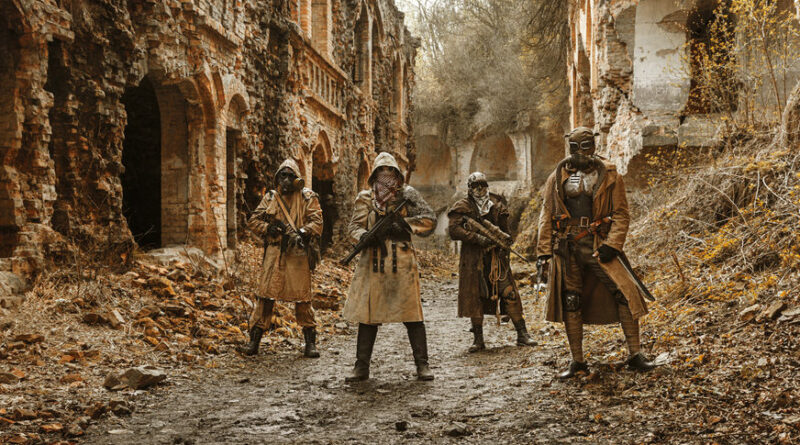Will Terrorist Groups Use Weapons of Mass Destruction?
The possibility of terrorism using weapons of mass destruction (WMD) in their attacks is real. Most terrorist attacks have been committed using convectional tactics like bombing, kidnapping and shooting. Moreover, some terrorist organizations such as Aum Shinrikyo of Japan, Al Qaeda and associates, Islamic State militant group, Jemaah Islamiya and Egyptian Islamic Jihad have tirelessly continued to search for nuclear, biological and chemical weapons. Morever, in 1995, Japanese cult organization Aum Shinrikyo used chemical weapons against civilians in Tokyo subway. There was also Anthrax attack targeted at media and certain individuals of the congress. A few other groups driven by vague religious beliefs and cultural ideologies have shown their willingness to inflict a colossal damage on humanities. Therefore, most emphasis has been directed on how to prevent the spread of nuclear weapons materials to reach such groups.
Terrorist motivation to use weapons of mass destruction
The former leader of Al Qaeda, Osama been Bin Laden asserted in 1998 that it is his Islamic duty to acquire WMD weapons. He went on to explain to his followers the need and rational for acquiring and using these weapons for consequent use on their enemies to help them achieve the goals of their organization. Therefore, fulfillment of his intent may be a top most priority to his remaining lieutenants in their quest to change the global status quo. This statements, though may be interpreted as empty threats, it signal their purpose of using WMD to counter US domination. We can consequently say that acquiring WMD and more specifically nuclear and biological weapons, has remained Al Qaeda’s top priority, (Mowatt-Larssen, 2010).
The use of WMD by terrorist groups in the previous years was hindered by a number of factors. These groups seek to obtain political gains and want to draw attention from such attacks to maintain their support base. Recent findings indicate that terrorist groups have moved from their conventional wisdom of few casualties and lots of people watching to more casualties and lots of people dead and this has motivated the use of WMD. However, their current purpose to inflict terror on a large number of people, the use of WMD, as demonstrated in the latest attacks on world trade centre is not justifiable, (Bowman, 2002). Although the use of WMD will lead to a large number of casualties, their use is equally risky to terrorists themselves. The effects of using WMD are uncertain and there is a high possibility of severe retaliation from international community. The increasing number of casualties in terrorist attacks has shown that terrorists have negated the stigma of WMD. The central intelligence agency report has shown that there is increasing interest by these groups to acquire and use WMD.
Terrorist capabilities to acquire weapons of mass destruction
Nuclear weapons
Nuclear weapons are the most destructive of all weapons of mass destruction but acquiring them remains the greatest challenge for terrorist groups. The main reason for the difficulty lies on how to obtain enough quantity of fissile material and technical knowledge which are necessary to in making nuclear weapons. However, there is a possibility of terror groups building crude nuclear weapon if they can access fissile materials. Developing radiological weapon can be done with much less difficulty because it does not involve the use of fissile materials and is less complex compared to nuclear weapons. This however is less destructive unlike nuclear weapons. State sponsors of terrorism are unlikely to offer nuclear weapons to these groups for fear of international retaliation. There is however the probability of leaking these materials and technical know-how from the former Soviet states. This remains a major concern which increases the likelihood of terrorists groups getting nuclear weapons, (Bowman, 2002).
Biological weapons
Developing effective biological weapons that are capable of causing mass casualties outside a state run laboratory pose extraordinary operational and technical challenges. This explains why the fall of Anthrax attack in Capitol Hill and Aum Shinrikyo attack in Tokyo did not cause mass casualties. Moreover, experts suspect that Anthrax attack may have originated from government laboratories. This has led to increased attention on the physical security issues surrounding laboratories and facilities housing dangerous weapons. Though obtaining and growing biological weapons may be quiet easy, considerable steps are required to make it an effective biological weapon. The main challenge lies in the dissemination which needs to be properly designed. In addition, a suitable metrological condition is required to carry out the attack. The Aum Shinrikyo attack on Tokyo subway confirms difficulty in using biological weapons by terror groups. However, experts believe that less efficient use of these weapons is possible and could equally cause injuries and even casualties to thousands if the attack is carried out in enclosed environment, (Bowman, 2002).
The use of highly contagious disease like smallpox virus remains a major concern. Anthrax attack was contained because it is not contagious like smallpox. Naturally, smallpox disease has been eliminated though their sample virus can be found in US and Russia laboratories. The possibility of unknown samples and security of Russia laboratory remains a concern. There is also a possible use of agro terrorism to cause economic damage to population. The natural cause of mad cow and foot and mouth in Europe impacted negatively on markets and economy and terror gangs may use these weapons to inflict economic and social disruption.
Chemical weapons
The use of toxic industrial chemicals such as chlorine and phosgene is quite possible because they are easily available. Blister agents can be made with much ease and can be used as chemical weapons though will require precursor chemical to make an effective weapon. There are however, some degree of control in the production and transfer of precursor chemical which makes their use difficult. Nonetheless, vapor and Aerosol can effectively disseminate using sprayers and explosives. The nerve agent Sarin produced by Aum Shirinkyo cult resulted in just 12 fatalities, and this confirms difficulty in using chemical weapons, (Bowman, 2002).
Conclusion
The 9/11 attack on world trade centre have shown the growing desire for terror groups to cause a large number of casualties on their perceived enemies. It also provides some important lessons on the selection of weapons by terrorist groups. The use of Airplanes as a weapon was intended to cause large casualties and to specific points of target. Such an elaborate plot was unexpected and was quiet hard to anticipate the use of such weapons, Airplane, which are so difficult tom acquire. There is growing suspicion on the use of WMD in future terror attacks for political gains and create public fear. The anthrax attack in Capitol Hill and Tokyo subway indicates how terrorists are determined cause mass damage by using WMD in their attacks. There is high possibility that this terror groups can access WMD because of looser controls in nuclear stock piles, technology and smallpox samples within former Soviet states. However, obtaining WMD by terrorist groups remains harder and challenging than what is depicted in the public by the press.
References
Bowman, S. (2002). Weapons of Mass Destruction. The Terrorist Threat: CRS Report for Congress. 31332 (4-6).
Mowatt-Larssen, R. (2010). Al Qaeda Weapons of Mass Destruction Threat: Hype or Reality? A Timeline of Terrorists’ Efforts to Acquire WMD. Retrieved on 09/07/2012 from http://belfercenter.ksg.harvard.edu




